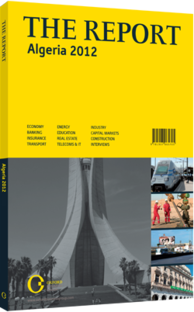
The Report
This article is from the The Guide chapter of The Report: Algeria 2012. Explore other chapters from this report.
There are a number of reasons for cities to grow, such as trade, the harvesting of resources or the fortification of border areas. Those developed by the Romans in what is today Algeria are no exception. The area was rich in resources and was located on the shores of the Mediterranean, the Western world’s greatest trading corridor. It was populated by restive Berber tribes who had fought in the Punic Wars between Rome and Carthage – wars which established the former’s primacy as a Mediterranean power.
ROMAN BEGINNINGS: It was during the Punic Wars that the coastline of what is now Algeria came under Roman influence. The region west of Carthage to the Muluya River (now in Morocco) was known as Numidia, and was divided between two Berber kingdoms, the eastern Massylii and the western Masaesyli. In the Second Punic War of the last two decades of the 3rd century BCE, the Massylii, in territory adjacent to Carthage’s, allied with Hannibal’s Carthaginians, while the Masaesyli turned to Rome. However, in 206 BCE, both tribal groupings switched sides.
The region became, in effect, a Roman vassal. Roman commercial interests and culture permeated ever more deeply. In 46 BCE, Rome annexed what had been Numidia, a situation that was completed in 24 BCE with the formal addition of other Berber territories to the empire. The coast of today’s Algeria remained within the Roman empire for nearly five centuries.
CITIES OF THE BREADBASKET: While the Roman military presence in the region was not numerous following its annexation, Roman influence on North-west Africa had a lasting impact on the local culture. Arguably the most important aspects of this were the growth of agriculture, and the parallel process of urbanisation.
North Africa, including today’s Algerian coast, famously became one of the breadbaskets of the empire, supplying it with cereals, fruit and olive oil. In order to develop centres for trading and exporting these goods, the Romans established cities; in the process, they also forced the urbanisation of some Berbers, which had the added benefit of improving the province’s security by reducing the threat of attacks by nomads.
SITES & SIGHTS: The Roman sites are certainly one of Algeria’s largest tourist draws these days. While many of the main ruins share features with others found across North Africa and indeed beyond, most have unique features that set them apart. Though several were developed as Roman colonies, they became centres for Latinised Africans with their own culture.
As the artefacts on display, including statues, carvings, mosaics and stelae (carved slabs of stone) demonstrate, some of the “Roman” cities existed before the annexation, as Punic (Carthaginian) centres, and many survived well beyond the collapse of the Western Roman empire, with Byzantine culture flourishing after the Byzantines recaptured the region from the Vandals in the fifth century. The fact that the region was not ravaged by Gothic invasions accounts for how well-preserved some of the sites are. Arguably the finest and best-preserved site in the country – and a contender for one of the best of its kind anywhere in North Africa – is Djémila, located near Setif, in the hinterland of northern Algeria. Djémila is listed as a World Heritage Site by UNESCO, which describes it as “an outstanding example of a type of architectural ensemble illustrating a significant stage in Roman history of North Africa, from the 2nd to the 6th centuries”.
What sets the site apart is the way that the typical Roman city plan was adapted to suit a sloping hillside location. The city was founded as a Roman military colony named Ciucul under the rule of Nerva (96-98 CE), but several of the more famous landmarks of the city were constructed later. The Arch of Caracalla and the Septimius Severus Temple were built in the early part of the second century as the city developed beyond its original fortifications; the following century saw the development of Christian ecclesiastical buildings. The site is famous for its mosaics, which depict both mythological scenes and daily life, providing a fascinating and vivid snapshot of what society looked like at that time.
You have reached the limit of premium articles you can view for free.
Choose from the options below to purchase print or digital editions of our Reports. You can also purchase a website subscription giving you unlimited access to all of our Reports online for 12 months.
If you have already purchased this Report or have a website subscription, please login to continue.
| Chapter overview View the The Guide chapter overview, from The Report: Algeria 2012 | Next chapter from this report Table of Contents, from The Report: Algeria 2012 |

This article is from the The Guide chapter of The Report: Algeria 2012. Explore other chapters from this report.
Explore any of the chapters below to select an article.
Stay updated on how some of the world’s most promising markets are being affected by the Covid-19 pandemic, and what actions governments and private businesses are taking to mitigate challenges and ensure their long-term growth story continues.
Register now and also receive a complimentary 2-month licence to the OBG Research Terminal.
Register Here×